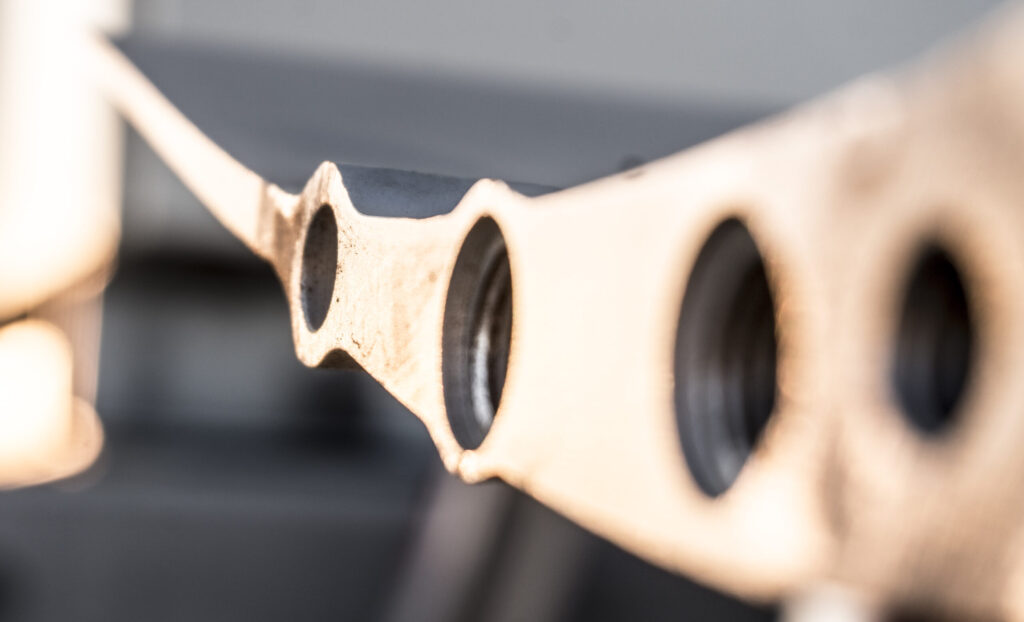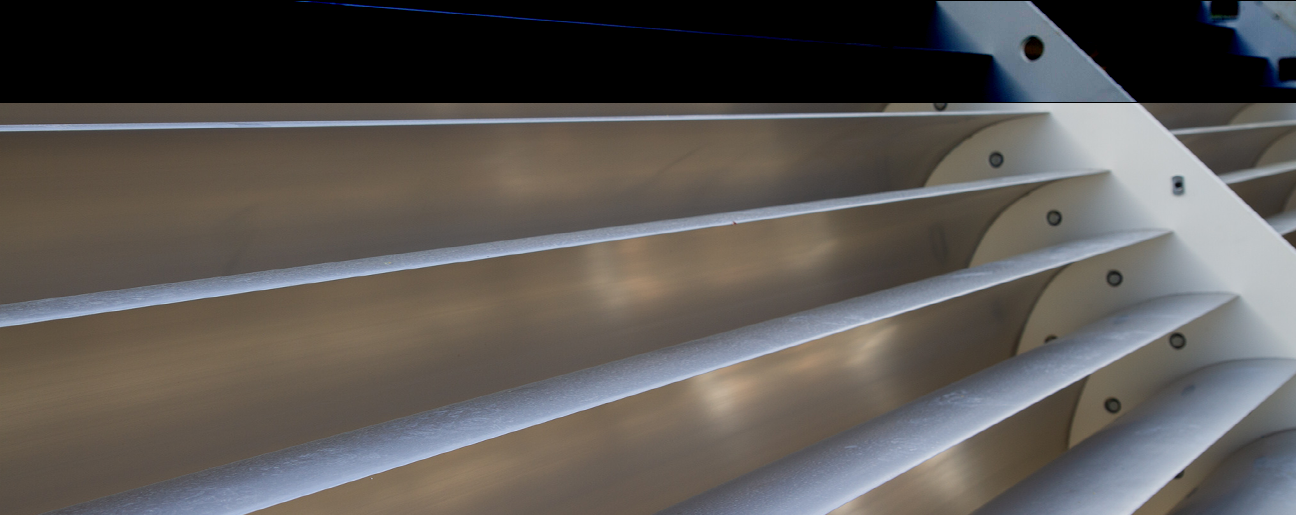Overview
Turning Vanes also known as Guide Vanes, Flow directors, stand not merely as a system component but a pivotal element, assuring airflow mastery within wind tunnels. Tailored for optimal performance in specific airspeed ranges within rotational sections, these components are crafted bearing in mind the nuanced demands of distinct aerodynamic contexts, ensuring that each vane not only conforms to but enhances the operability and efficiency within its assigned role.


Guide vanes are the cornerstone of wind tunnel efficiency. Classic NASA research shows that up to 30% of energy losses in a tunnel may appear due to poor turning vane design, insufficient frequency within vanes assembly and inappropriate mounting. Most importantly turning vanes design may drastically affect the airflow quality both inducing and reducing the turbulence.
TunnelTech turning vanes are made from aviation grade extruded aluminium and calibrated with precision of microns. Unique X-large profile of our own design provides efficient direction change with virtually no disturbance to the airflow while reduced spacing in turning vanes acts honeycomb alike straightening the slightest airstream differences.
Their design capitalizes on an optimized resistance characteristic in the air stream part, precisely tuned to function amidst air speeds in the rotational section. Ensuring an optimal ratio of spacing to chord at 1/3, the vanes boast a flexible adaptation, with the ability to vary spacing as required. This dynamism in design serves to meet distinct operational demands, ensuring that the flow straighteners are not merely fitting within systems but elevating their functional efficacy.
Turning vanes have been meticulously engineered to ensure that the relationship between spacing and chord is both harmonious and functionally advantageous. While the ideal spacing can be adjusted according to need, the intrinsic design principle ensures that the vanes work in tandem with the surrounding aerodynamic structures, guiding the flow with minimized resistance and maximized efficiency, underscoring a union of practicality and aerodynamic mastery.
Furthermore, rotational sections with optimal or reduced spacing are not only efficient in their primary role but also proficient in effective turbulence intensity suppression, acting as pivotal constituents within deturbulation systems. The meticulous engineering encapsulated within each turning vane allows for a reduced turbulence footprint, assuring that airflows are not only directed but also refined in their passage, ensuring a smoother, more stable, and ultimately more controlled aerodynamic journey through the system.


